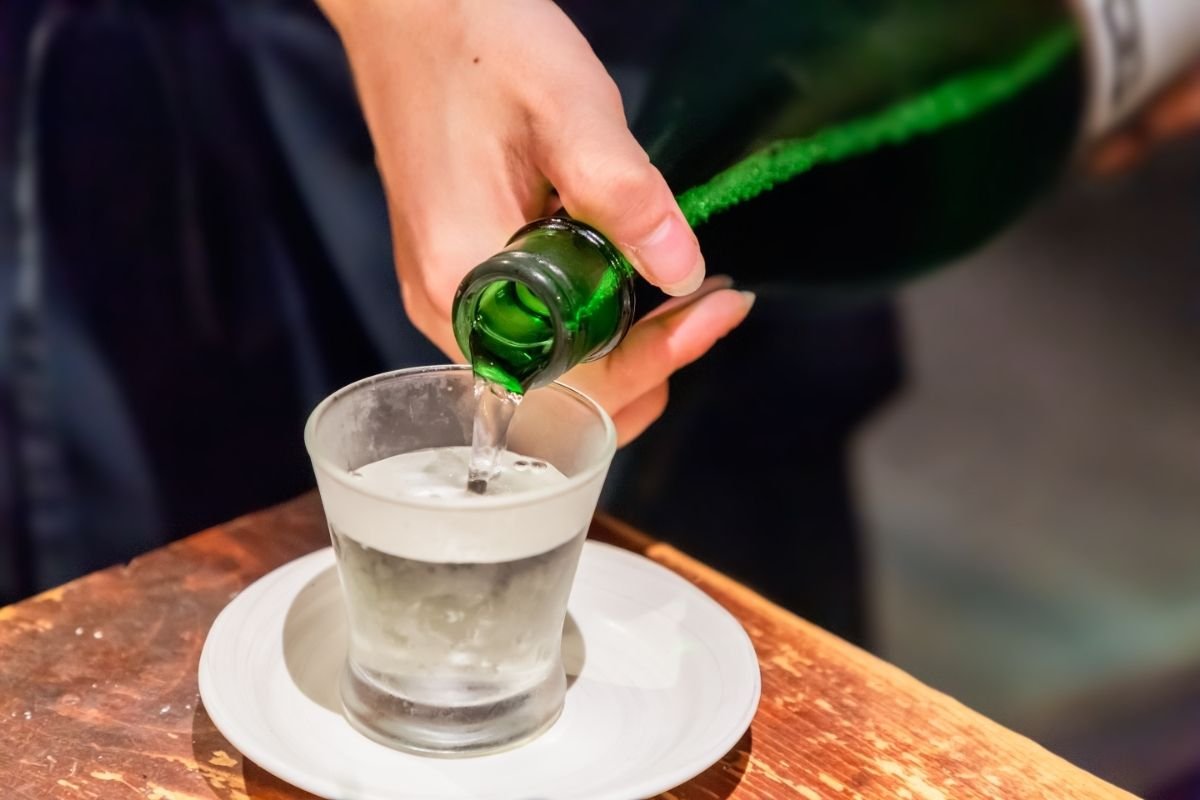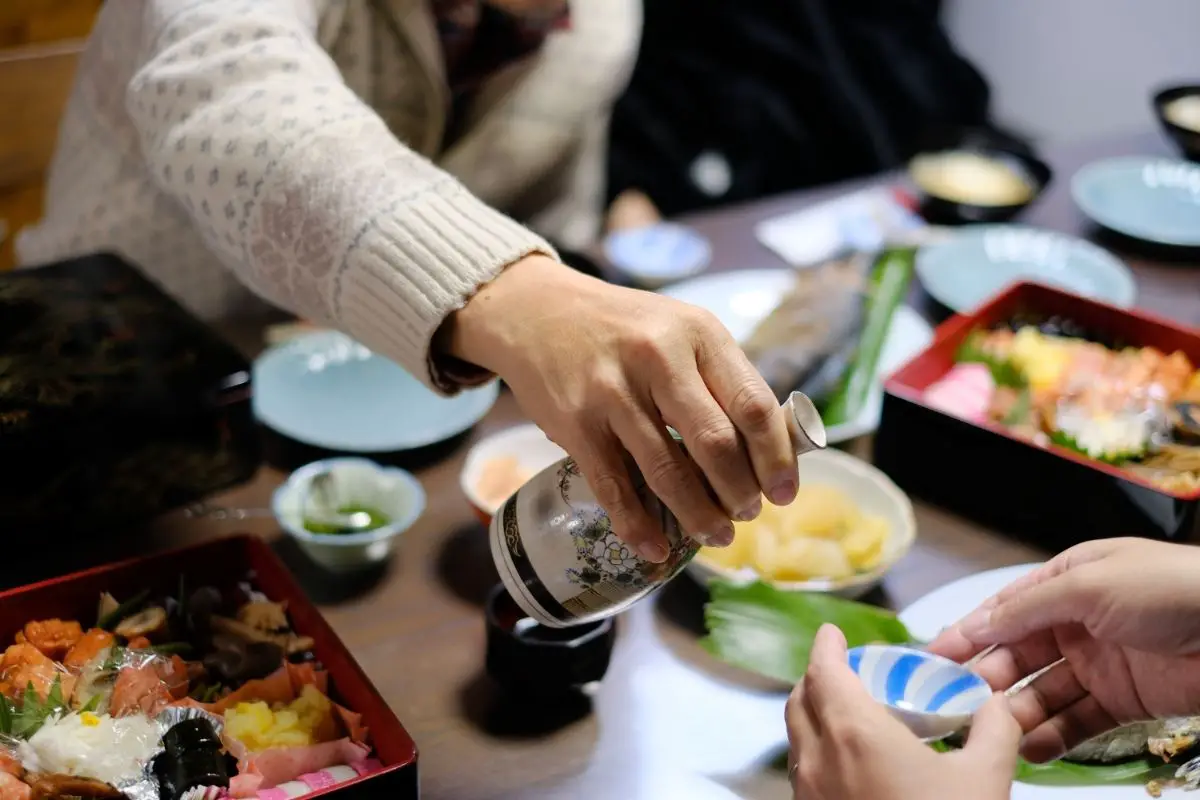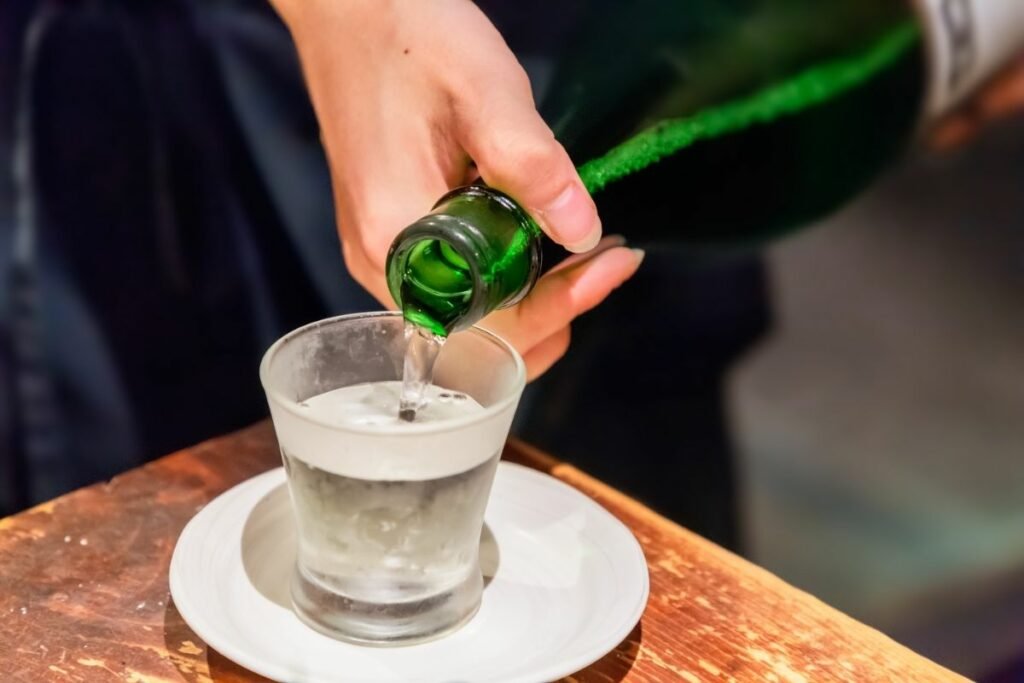Sake is a Japanese alcoholic drink that is made from fermented rice. People have drunk sake in Japan for over 2500 years. Also known as rice wine, this unique drink has commonalities with beer, wine, and spirits.
This can make it tricky to predict how sake will taste, especially if you’ve never tried sake before!

If you’re wondering how sake will taste, keep reading. We’ll cover more about sake’s versatile flavors in this article, including the difference between sweet and dry sake, and the difference between various rice wine brands.
After reading this article, you’ll have a better idea of how sake tastes and what makes it different from other alcohols!
How Sake Is Made?
Sake is first made from short-grain rice. The kernels are polished and refined until they turn white. The rice and water need to be of high quality to produce premium sake (see also ‘What Percent Alcohol Is Sake?‘).
Next, the polished rice is mixed with water, yeast, and koji mold. The mixture is left to ferment, allowing the rice’s starch to react with the koji, producing sugar. Alcohol is made once the sugar and yeast mix.
Shells are then taken off of the rice to make the liquid sweeter. Lastly, the beverage is filtered, pasteurized to remove harmful bacteria, then bottled for sale.
This process creates strong sake with high alcohol content. Undiluted sake can have between 14-20% alcohol, though this will vary with each brand.
How Does Sake Taste?
Sake generally tastes slightly sweet, with a neat, fresh finish. It combines sharp and savory notes but also has fruit (see also, ‘Why is Fruit so Expensive in Japan?‘) and oak undertones similar to wine.
Sake is similar to beer and spirits, but as a light beverage, it isn’t as rough on the tongue or throat compared to spirits. It also contains less malt and suds than beer does.
Sake has a distinct aftertaste, but it doesn’t linger for very long. One of the most significant ingredients within sake is Koji.
This gives the drink savory notes similar to potatoes and mushrooms (see also ‘Are Enoki Mushrooms Healthy?‘). These light smells will become less noticeable once one pours sake into a glass.
Sake has a great content of glutamic acid, giving the drink a hearty, plentiful body. In most cases, sake bottles can have almost double the acid seen in wine. This heartiness is partly responsible for sake’s umami flavor, similar to the savory notes seen in meat broths and fermented foods.
Sweet Sake And Dry Sake
Sake producers normally give their bottles a number, indicating how sweet or dry the beverage is. This score is called nihonshudo, a density figure which is usually placed on the label.
A lower nihonshudo score will indicate that the sake is high density, meaning the drink will be sweeter.
A higher nihonshudo score indicates the opposite. The sake will be low density, resulting in a drier tasting drink.
Different brands are known to make sake with different flavors. For instance, the brand Honjozo produces lighter sake that’s smoother on the tongue. These bottles are easier to drink, so they may be better for those that haven’t tried sake before.
On the other hand, Junmai’s sake is rather potent. It has bold notes and a mild acidity that’s appreciated by more experienced sake drinkers.
Those that prefer fruitier tastes may do better with brands like Ginjo or Shiboritate, but people who like sweeter drinks may like Nigori’s sake better.
Processes That Affect How Sake Tastes

Polishing and junmai are two things that can affect the way sake tastes.
Polishing
Polishing is when the rice kernels used to create sake are polished. This exposes each kernel’s starchy interior. In most cases, higher quality sake tends to use rice kernels that are polished more than ones polished less.
Sake will often have the polished percentage on their label. If you’re buying sake at the store or ordering at a restaurant, look out for sake with 50-70% polished kernels. These will normally be premium beverages.
Junmai
A huge factor that shows whether sake is high in quality or not is the ingredients themselves, particularly the rice. The word ‘junmai’ means that the rice is pure.
Seasoned sake drinkers often look out for this label. Junmai sake bottles will have no preservatives or extra alcohol added to the brew. The sake is only made from koji, rice yeast, and water.
How Sake Tastes Compared To Wine
Wine is an alcoholic beverage that can be likened to sake, but these two drinks have a few differences. Sake has a lot of amino acids within. This highlights its umami flavors, making it ideal when paired with savory, salty foods.
Some enthusiasts that like the smell of wine may be disappointed with sake’s lighter aromas. Instead of a fruity, potent smell, sake has gentle, nutty notes.
Sake was first created with no aroma at all, but makers started creating fragrant bottles in the latter half of the 20th century.
Sake also tastes much milder compared to wine. Unlike sake, wine has tannins which keep it acidic. Sake also has a higher alcohol content compared to wine. Undiluted brews can range between 14-20%, while wine often remains between 12-15%.
How To Taste Sake
People differ on whether sake should be drunk hot or cold, but you can drink it either way. However, never drink premium sake bottles warm, as this can affect the flavor. Premium sake should only be drunk cold.
Testing The Sake
You can taste test sake as you would with wine by checking its taste and smell. Before you begin, check what color the beverage is.
Sake should only be clear, not brown. If the drink is brown, this is a sign that the drink has oxidized, so it shouldn’t be drunk.
To test the sake, gently swirl the drink around, then inhale your nose over the glass. Try to spot any smells, like floral, fruity, or savory notes.
Once you inhale, take a little sip, letting the beverage flow over your tongue. Breathe out through your nose as you swallow. Make a note of any interesting tastes that can come from fermented rice, like nutty, sweet, or umami flavors.
Conclusion
It’s hard to tell someone what sake tastes like, as there are so many bottles and brands to choose from. Sake can taste different depending on how it is made and where the ingredients are sourced from.
In most cases, sake is a light beverage that has neat and sweet flavors. The drink has a good balance of savory and sharp notes.
It won’t be as harsh on the throat as whiskey or vodka, but it is higher in alcohol than beer and wine. Keep this in mind to avoid getting intoxicated too quickly.
If you’ve never tried sake before, it’s a good idea to try as many types of sake as you can. You may want to start on lighter brands and then work your way up to stronger ones, but feel free to begin with potent sake if that’s your preference.









